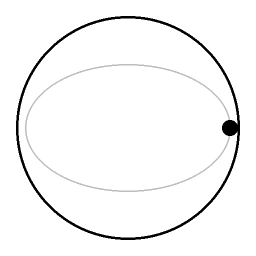
Taylor column
Encyclopedia

Coriolis effect
In physics, the Coriolis effect is a deflection of moving objects when they are viewed in a rotating reference frame. In a reference frame with clockwise rotation, the deflection is to the left of the motion of the object; in one with counter-clockwise rotation, the deflection is to the right...
. It was named after Geoffrey Ingram Taylor
Geoffrey Ingram Taylor
Sir Geoffrey Ingram Taylor OM was a British physicist, mathematician and expert on fluid dynamics and wave theory. His biographer and one-time student, George Batchelor, described him as "one of the most notable scientists of this century".-Biography:Taylor was born in St. John's Wood, London...
. Rotating fluids that are perturbed tend to form columns parallel to the axis of rotation called Taylor columns.
In a rotating fluid a strongly buoyant ball (such as a pingpong ball) will rise to the surface only slowly. Fluid that is shifted from its position in the rotating system tends to be pushed back to the point it is shifted away from, the faster the rotation rate, the smaller the radius of the inertial circle.

A rotating fluid has a specific kind of rigidity, it does not quite act like a fluid anymore.
History
Taylor columns were first observed by William Thomson, Lord KelvinWilliam Thomson, 1st Baron Kelvin
William Thomson, 1st Baron Kelvin OM, GCVO, PC, PRS, PRSE, was a mathematical physicist and engineer. At the University of Glasgow he did important work in the mathematical analysis of electricity and formulation of the first and second laws of thermodynamics, and did much to unify the emerging...
, in 1868. Taylor columns were featured in lecture demonstrations by Kelvin in 1881 and by John Perry in 1890. The phenomenon is explained via the Taylor-Proudman theorem, and it has been investigated by Taylor, Grace, Stewartson, and Maxworthy — among others.
External links
- http://www-paoc.mit.edu/12307/reports/tcolumns.pdf
- http://www.seas.harvard.edu/brenner/taylor/physic_today/taylor.htm

